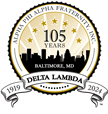The Seven Jewels of Alpha Phi Alpha
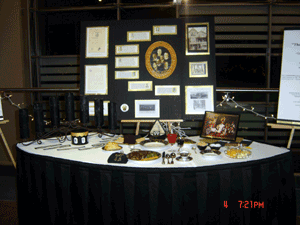
Alpha Phi Alpha Fraternity, Inc. was organized at Cornell University in Ithaca, New York on December 4, 1906. The Seven Jewels of Alpha include those men who had remained steadfast to the ideal of a Greek letter fraternity. They did not waiver in their efforts to bring about the realization of their vision, and who dared to be pioneers in an untried field of student life. These seven men, the Jewels of the fraternity, are:
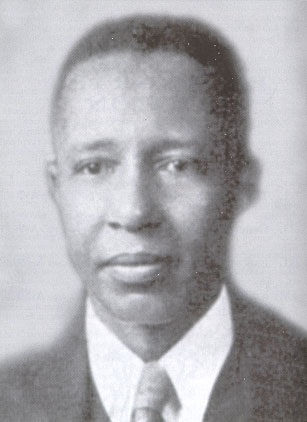 Jewel Brother Henry Arthur Callis became a practicing physician, Howard University Professor of Medicine and prolific contributor to medical journals. Often regarded as the “philosopher of the founders,” and a moving force in the Fraternity’s development, he was the only one of the “Cornell Seven” to become General President. Prior to moving to Washington, D.C., he was a medical consultant to the Veterans Hospital in Tuskegee, Alabama. Upon his death in 1974, at age 87, the Fraternity entered a time without any living Jewels. His papers were donated to Howard’s Moorland-Spingarn Research Center.
Jewel Brother Henry Arthur Callis became a practicing physician, Howard University Professor of Medicine and prolific contributor to medical journals. Often regarded as the “philosopher of the founders,” and a moving force in the Fraternity’s development, he was the only one of the “Cornell Seven” to become General President. Prior to moving to Washington, D.C., he was a medical consultant to the Veterans Hospital in Tuskegee, Alabama. Upon his death in 1974, at age 87, the Fraternity entered a time without any living Jewels. His papers were donated to Howard’s Moorland-Spingarn Research Center.
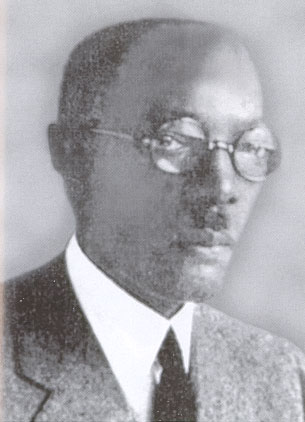 Jewel Brother Charles Henry Chapman, entered higher education and eventually became Professor of Agriculture at what is now Florida A&M University. A university funeral was held with considerable Fraternity participation when he became the first Jewel to enter Omega Chapter in 1934. Described as “a Brother beloved in the bonds,” Chapman was a founder of FAMU’s Beta Nu Chapter. During the organization stages of Alpha Chapter, he was the first chairman of the Committees on Initiation and Organization. After leaving Cornell Chapman chose the field of education and was last engaged in teaching at the Florida A&M College, Tallahassee, Florida
Jewel Brother Charles Henry Chapman, entered higher education and eventually became Professor of Agriculture at what is now Florida A&M University. A university funeral was held with considerable Fraternity participation when he became the first Jewel to enter Omega Chapter in 1934. Described as “a Brother beloved in the bonds,” Chapman was a founder of FAMU’s Beta Nu Chapter. During the organization stages of Alpha Chapter, he was the first chairman of the Committees on Initiation and Organization. After leaving Cornell Chapman chose the field of education and was last engaged in teaching at the Florida A&M College, Tallahassee, Florida
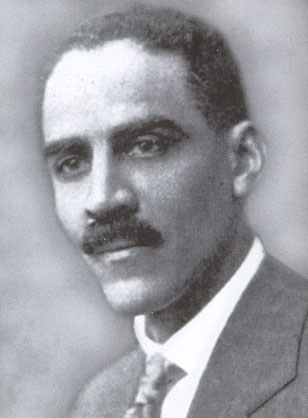 Jewel Brother Eugene Kinckle Jones,who although not at Cornell in 1905 -1906, was present on December 4, 1906 when the decision to form a fraternity was made. A versatile leader, he organized the first three Fraternity chapters that branched out from Cornellâ€â€Beta at Howard, Gamma at Virginia Union and the original Delta at the University of Toronto in Canada. In addition to becoming Alpha Chapter’s second President and joining with Callis in creating the Fraternity name, Jones was a member of the first Committees on Constitution and Organization and helped write the Fraternity ritual.He occupies a dual place in our history. He is the seventh Jewel and one of the first initiates. His status as a founder was not finally established until 1952. He died in 1954. He served as the first Executive Secretary of the National Urban League. His 20-year tenure with the Urban League thus far has exceeded those of all his successors in office.
Jewel Brother Eugene Kinckle Jones,who although not at Cornell in 1905 -1906, was present on December 4, 1906 when the decision to form a fraternity was made. A versatile leader, he organized the first three Fraternity chapters that branched out from Cornellâ€â€Beta at Howard, Gamma at Virginia Union and the original Delta at the University of Toronto in Canada. In addition to becoming Alpha Chapter’s second President and joining with Callis in creating the Fraternity name, Jones was a member of the first Committees on Constitution and Organization and helped write the Fraternity ritual.He occupies a dual place in our history. He is the seventh Jewel and one of the first initiates. His status as a founder was not finally established until 1952. He died in 1954. He served as the first Executive Secretary of the National Urban League. His 20-year tenure with the Urban League thus far has exceeded those of all his successors in office.
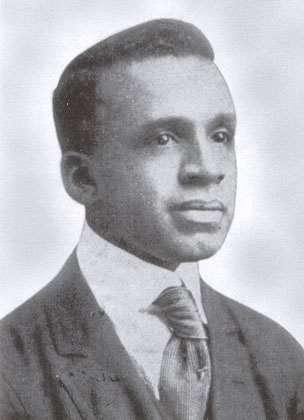 Jewel Brother George Biddle Kelley, who after leaving Cornell became the first African American civil engineer and entered the service of the State of New York. Not only was he the strongest proponent of the Fraternity idea among the organization’s founders, the civil engineering student also became Alpha Chapter’s first President. In addition, he served on committees that worked out the handshake and ritual. Kelley was popular with the Brotherhood. He resided in Troy, New York and was active with Beta Pi Lambda Chapter in Albany. He died in 1963.
Jewel Brother George Biddle Kelley, who after leaving Cornell became the first African American civil engineer and entered the service of the State of New York. Not only was he the strongest proponent of the Fraternity idea among the organization’s founders, the civil engineering student also became Alpha Chapter’s first President. In addition, he served on committees that worked out the handshake and ritual. Kelley was popular with the Brotherhood. He resided in Troy, New York and was active with Beta Pi Lambda Chapter in Albany. He died in 1963.
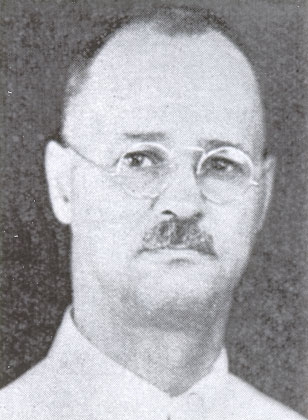 Jewel Brother Nathaniel Allison Murray, who did college and graduate work at Cornell after completing his undergraduate studies at Howard. He entered the field of education, and was a teacher at the Armstrong Technical High School, Washington, D.C.; much of his career was spent at Armstrong. He was a member of Alpha Chapter’s first committee on organization of the new fraternal group, as well as the Committee on the Grip. The charter member of Washington’s Mu Lambda Chapter was a frequent attendee of General Conventions. He died in 1959.
Jewel Brother Nathaniel Allison Murray, who did college and graduate work at Cornell after completing his undergraduate studies at Howard. He entered the field of education, and was a teacher at the Armstrong Technical High School, Washington, D.C.; much of his career was spent at Armstrong. He was a member of Alpha Chapter’s first committee on organization of the new fraternal group, as well as the Committee on the Grip. The charter member of Washington’s Mu Lambda Chapter was a frequent attendee of General Conventions. He died in 1959.
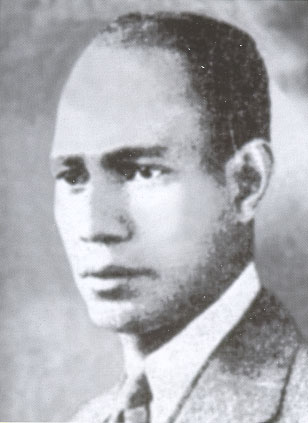 Jewel Brother Robert Harold Ogle, who after leaving Cornell entered the secretarial field and had the unique privilege of being attached to the office of Committee on Appropriations of the United States Senate. He was an African American pioneer in his Capitol Hill position. He proposed the Fraternity’s colors and was Alpha Chapter’s first secretary. Ogle joined Kelley in working out the first ritual and later became a charter member of Washington’s Mu Lambda Chapter. He died in 1936.
Jewel Brother Robert Harold Ogle, who after leaving Cornell entered the secretarial field and had the unique privilege of being attached to the office of Committee on Appropriations of the United States Senate. He was an African American pioneer in his Capitol Hill position. He proposed the Fraternity’s colors and was Alpha Chapter’s first secretary. Ogle joined Kelley in working out the first ritual and later became a charter member of Washington’s Mu Lambda Chapter. He died in 1936.
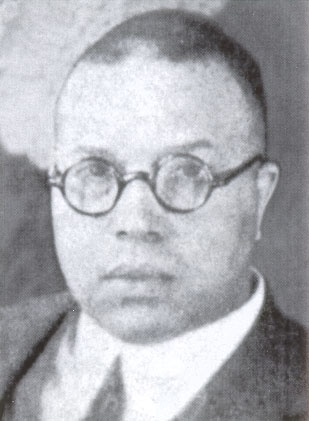 Jewel Brother Vertner Woodson Tandy, who after leaving Cornell became the state of New York’s first registered black architect with offices on Broadway, New York. The designer of the Fraternity pin holds the distinction of being the first African American to pass the military commissioning examination and was commissioned First Lieutenant in the 15th Infantry of the New York State National Guard. He was Alpha Chapter’s first treasurer and took the initiative to incorporate the Fraternity. Among the buildings designed by the highly talented architect is Saint Phillips Episcopal Church in New York City. He died in 1949, at age 64.
Jewel Brother Vertner Woodson Tandy, who after leaving Cornell became the state of New York’s first registered black architect with offices on Broadway, New York. The designer of the Fraternity pin holds the distinction of being the first African American to pass the military commissioning examination and was commissioned First Lieutenant in the 15th Infantry of the New York State National Guard. He was Alpha Chapter’s first treasurer and took the initiative to incorporate the Fraternity. Among the buildings designed by the highly talented architect is Saint Phillips Episcopal Church in New York City. He died in 1949, at age 64.
